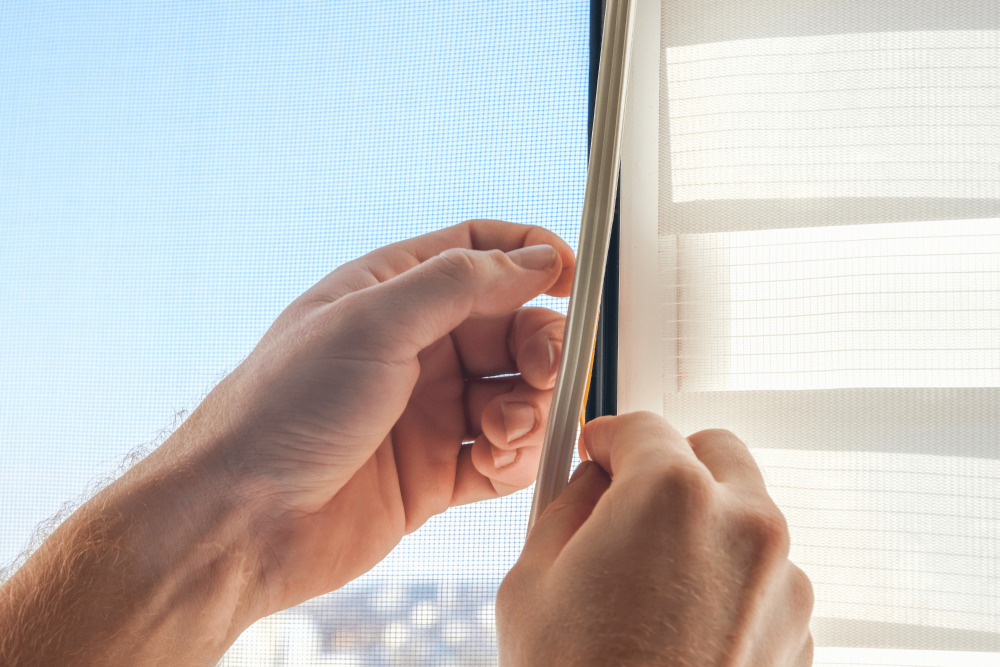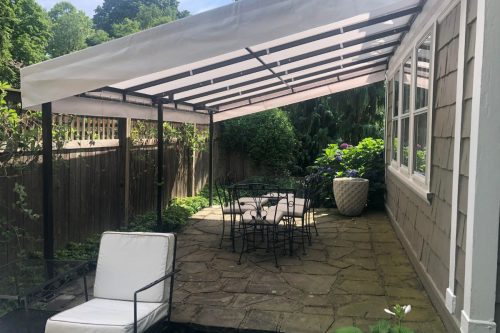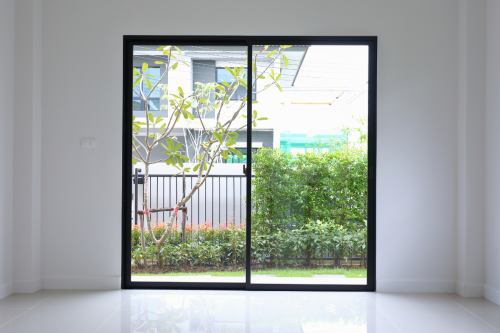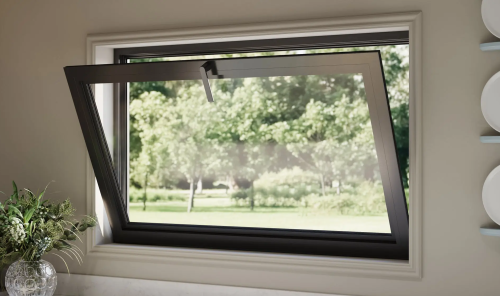Weatherproofing the exterior doors of your house is an essential task to maintain the comfort and energy efficiency of your home. Whether you’re looking to keep the heat in during winter or the cool air in during summer, weatherproofing your doors can make a significant difference.
Want to upgrade your exterior doors? Get in touch with us today!
Why Weatherproofing Your Door is Important
Weatherproofing your doors helps:
- Keep the indoor climate stable
- Reduces energy bills
- Prevents water ingress and moisture damage
- Keeps out pests
It’s a cost-effective way to enhance the longevity of your home’s structure and improve overall comfort.
Materials Needed for Weatherproofing
Before you start weatherproofing your door, gather the following materials:
- Weatherstripping
- Door sweep
- Caulk and caulking gun
- Foam tape
- Flathead screwdriver
- Utility knife
Step-by-Step Guide to Weatherproof Doors
1. Inspect Your Door
Begin by inspecting your door for any existing gaps, cracks, or damage. Pay special attention to the edges and corners, as these are common areas where air and moisture can seep through. Steel doors should be inspected for rust and any damage to the weatherstripping or seals. Sliding doors should be inspected for proper alignment and functioning of the track.
2. Install Weatherstripping
Weatherstripping is essential for sealing gaps around most doors. Here’s how to do it:
- Clean the door frame: Ensure the surface is clean and dry.
- Measure and cut: Measure the length of each side of the door frame and cut the weatherstripping to size.
- Attach the weatherstripping: Peel off the backing and press the weatherstripping firmly onto the door frame.
Tip: Ensure you choose weatherstripping based on your door type. For example, if it’s for a steel door, choose a weatherstripping material that adheres well to metal surfaces. Magnetic weatherstripping can be particularly effective.
3. Apply Caulk to Seal Gaps
Caulking helps seal any cracks or gaps around the door frame that weatherstripping may not cover.
- Choose the right caulk: Consider using exterior-grade caulk as it’s more durable.
- Apply the caulk: Use a caulking gun to apply a continuous bead of caulk along the edges of the door frame.
- Smooth the caulk: Use a caulk smoothing tool or your finger to smooth the bead and ensure it fills the gap completely.
4. Install a Door Sweep
A door sweep is an effective way to seal the gap or opening at the bottom of the door.
- Measure the door: Measure the width of your door and distance to the floor to ensure you choose a door sweep that fits.
- Cut the sweep to size: Cut the door sweep to match the width of your door.
- Attach the sweep: Screw or stick the door sweep to the bottom edge of the door.
5. Use Foam Tape for Extra Insulation
For additional insulation, apply foam tape along the top and sides of the door frame.
- Measure and cut: Measure the length needed and cut the foam tape accordingly.
- Apply the tape: Peel off the backing and press the foam tape into place along the door frame.

When and Why You Need to Replace Weatherproofing
Weatherproofing materials, while durable, do not last forever. Over time, they can deteriorate due to exposure to the elements, general wear and tear, and the natural ageing process of the materials. Regularly replacing weatherproofing is crucial to maintaining the efficiency and effectiveness of your door seals.
How Often Should You Replace Weatherproofing?
The frequency of replacing weatherproofing depends on several factors, including the material used, the climate in your area, and the level of wear and tear your doors experience. As a general guideline:
- Weatherstripping: Should be inspected annually and typically replaced every 1-2 years. If you notice cracks, gaps, or a decrease in its flexibility, it’s time for a replacement.
- Door sweeps: These should be checked at least once a year and replaced every 2-3 years, depending on how much the door is used and the wear it experiences from foot traffic and the elements.
- Caulking: Exterior caulk can last anywhere from 5 to 10 years, but it’s important to inspect it annually for signs of cracking, peeling, or shrinking. If you notice any of these issues, reapply the caulk to maintain a proper seal.
- Foam tape: This should be checked yearly and replaced every 1-2 years, especially if it starts to compress or lose its adhesive strength.
Why is Replacing Weatherproofing Important?
- Maintaining energy efficiency: Worn-out weatherproofing allows drafts to enter your home, making your heating and cooling systems work harder. This can lead to higher energy bills and reduced indoor comfort.
- Preventing moisture damage: Gaps in your weatherproofing can allow water to seep into your home, leading to potential damage to floors, walls, and the door itself. Over time, this moisture can cause mould growth and rot, which can be costly to repair.
- Enhancing security: Effective weatherproofing helps ensure your door closes tightly, enhancing the security of your home. While weatherproofing your front door, consider upgrading your door hardware to enhance security. A sturdy deadbolt and secure hinges not only protect your home but also help in creating a tighter seal when the door is closed.
- Improving noise reduction: Weatherproofing also acts as a barrier to noise, keeping unwanted sounds from entering your home. Replacing old weatherproofing can help maintain a quieter indoor environment.
- Keeping pests out: Gaps in your weatherproofing can be an invitation for pests to enter your home. By regularly replacing worn materials, you can keep insects and small animals at bay.
Signs That It’s Time to Replace Weatherproofing
- Visible wear and tear: Cracks, breaks, or peeling in weatherstripping, caulking, or door sweeps are clear signs that replacement is needed.
- Drafts around the door: If you feel a noticeable draft around the door, it’s likely that the weatherproofing has lost its effectiveness.
- Increased energy bills: A sudden spike in your energy bills could indicate that your home’s insulation, including weatherproofing, is no longer performing optimally.
- Difficulty closing the door: If your door no longer closes smoothly or you notice it doesn’t seal as tightly as it used to, the weatherproofing may need to be replaced.
Withstand Weather Conditions with Perth Window & Door
Ready to improve your home’s comfort and energy efficiency? Contact Perth Window & Door Replacement today! Our team of experts can help you choose quality exterior and front door options for your home that will last the test of time and keep the weather out. Browse all of our door options here or contact us to speak to an expert.
FAQs About Weatherproofing Doors
Yes, weatherproofing a door is a simple DIY task that can be done with basic tools and materials. Follow the steps outlined in this guide for best results.
There are several types of weatherstripping available, including adhesive-backed foam, V-strip, and door sweeps. Choose the type that best fits your door and budget.
Yes, weatherproofing can help reduce noise by sealing gaps and preventing sound from entering or escaping through the door.



